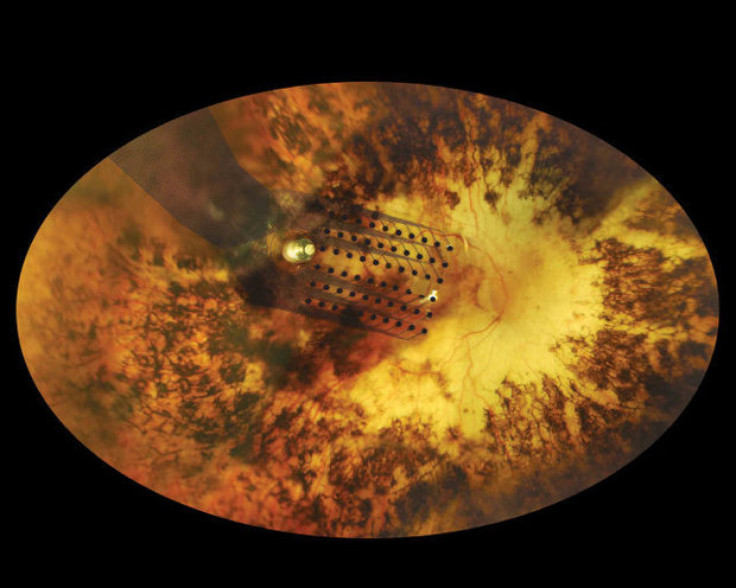Bionic Eye Coming: Duke To Begin Offering Argus II Implant To Help The Blind See

Nothing says "the future is here" like implanted bionic eyes for the blind.
That's what the Duke Eye Center, which is a division of the Duke University Medical Center, is about to offer to blind people to help them see.
The tech behind the bionic eye that will be offered by Duke is called the Argus II Retinal Prosthesis System, which is manufactured by Second Sight Medical Products. The Duke Eye Center is one of 12 eye centers across that country that will offer the Argus II. Here's how the Argus II bionic eye works.
The Argus II has a small camera that's mounted to a pair of eyeglasses. A computer that's roughly the size of a standard deck of cards is worn on the patient's belt and processes the video that's captured by the camera. A receiver located around the eyeball works in tandem with electrodes implanted on the patient's retina.
Cells in the eye's retina give the patient the ability to see by converting light into signals that get sent to the brain. These cells are damaged in blind patients. The Argus II bionic eye corrects this damage. The video captured by the camera is sent to the computer, which processes the image into instructions, which are then sent to the receiver wirelessly. The receiver then sends the instructions to the implant in the patient's eye. The electrodes use small jolts of electricity to work around the dead/damaged cells in the eye and send visual data to the parts of the eye that are still functional.
At this point, the Argus II's glasses and the computer are connected via a physical cable. In time, Second Sight hopes to take the cable out of the equation.
The Argus II bionic eye was made for patients suffering from a specific type of retinitis pigmentosa, which is a rare condition that affects roughly 100,000 Americans.
In order to be eligible for an Argus II, the patient must be at least 25 years old, be afflicted with retinitis pigmentosa and be able to tell the difference between light and dark. Roughly 10,000 Americans meet all of this criteria.
Each Argus II bionic eye costs Duke $145,000. It's currently unknown whether insurance plans will cover the cost of the Argus II.
There is no treatment for retinitis pigmentosa, so the Argus II bionic eye represents hope for blind patients that haven't had much of any to this point.
What do you think of the Argus II bionic eye? Do you know of any alternatives to the Argus II bionic eye that are comparable or better? Do you think insurance companies should cover the cost of the Argus II? Why or why not? Sound off in the comments below.
© Copyright IBTimes 2024. All rights reserved.












